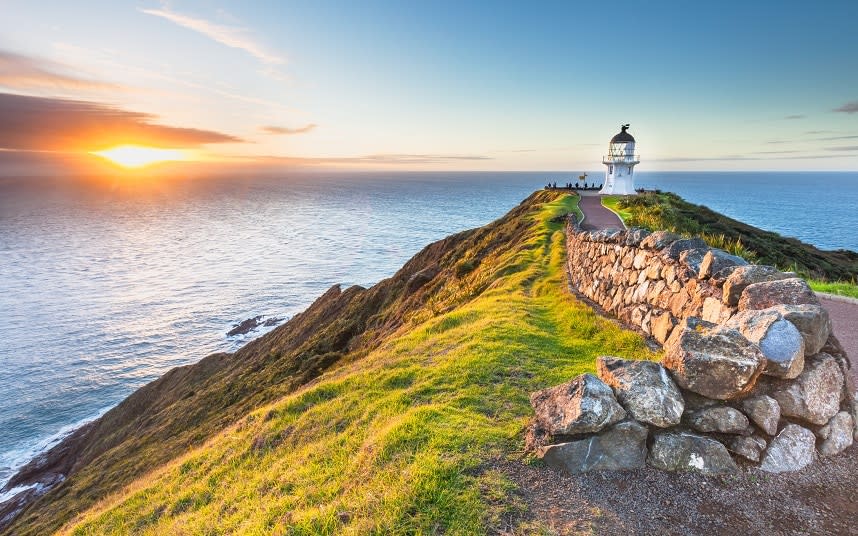End of the bucket list: Why tourist boards are trying to change the way you travel

Tourist boards traditionally shout about the very best things to see and do in their country. Click on any website and you will likely be greeted with a carousel of Unesco World Heritage Sites, white-sand beaches, never-ending sunsets.
But in 2018, with a growing number of tourists seeking out the same experiences at popular destinations, some have started taking a different approach: telling visitors to rewrite their ‘bucket lists’ and seek out alternative things to see and do.
This week, Tourism Australia launched a $10m campaign called ‘UnDiscover Australia’. Aimed at tourists from south-east Asia, Singapore, Malaysia, India and Indonesia, the campaign was launched in a bid to showcase the unfamiliar things to see and do in the country that receives over eight million tourists per year.

Speaking to Telegraph Travel, Lisa Ronson, the chief marketing officer at Tourism Australia, said: “One of the challenges that we face is that travellers think they know Australia. This campaign is all about debunking myths and challenging travellers’ preconceived stereotypes of Australia and really tackling them head on by showcasing some of the unusual, unexpected experiences that our country has in abundance.
“[The campaign] plays on some of the popular misconceptions about Australia highlighted by researc. There is much more to the country than the typical stereotypes of koalas, kangaroos, the outback and well-known icons.”
She added: “We will still promote our great and popular icons, but this will be in parallel with the more unusual and unexpected experiences that audiences will likely not be aware of.”

At this year’s Destinations International Annual Conference, Greg Oates from SkiftX Brand Strategy Group identified visitor dispersal strategies as a key focus for tourism initiatives in 2018. He said: “Moving visitors beyond core destination experiences and dates helps relieve overtourism, protect regional identity and assets, and increase average spend and time in a destination.
“Visitor dispersal also spurs economic development in new markets and creates greater inclusivity among underserved residents in both urban and non-urban environments,” he added.
Tourism Australia isn’t the only tourist board to build a campaign around the alternative things to see in a country. Last year, Tourism New Zealand launched a pilot campaign focused on the region of Northland as a test to see if it could successfully influence a shift in travel patterns among visitors from Victoria, Australia.
After the three-month trial, Facebook observed a six per cent boost in visitors to Northland while spend on Victorian credit cards were up 18.2 per cent. Campaign partner Flight Centre registered a 40 per cent increase in visitors booking tickets to Northland.
It’s a strategy being carried out closer to home, too. Robin Johnson from VisitBritain told Travel Weekly: “A big part of our work going forward will be to address the issue of regional dispersal. Only recently, we set a number of targets to counter London-only travel.”
In Scotland, the North Coast 500 initiative was launched in a bid to even out the 14.1 million tourists who visit the country each year. The project, mapping out a circular road trip route connecting Inverness, John O’Groats, Durness and Ullapool, has attracted tens of thousands of visitors to this remote corner of Scotland. After two years it had generated £10m for the local economy.
However, some locals from the region are unhappy with the attention. Since the initiative launched in 2015, there has been a sharp increase in the number of traffic incidents in the region, complaints of the degradation of the single-track roads, as well as congestion at car parks and viewing points around this previously quiet corner of Britain.
In other parts of the world there is a push towards dispersing tourists not geographically but in terms of when they visit, and how long for. In Dubrovnik, which has seen a steep rise in tourist numbers since the end of the civil war in the Nineties, the tourist board is pushing the city as a year-round destination by staggering exhibitions and festivals throughout the year.
Spain’s tourist board, on the other hand, is focusing on quality over quantity. This week it was announced that Spain had received a drop of five per cent in tourist arrivals for July 2018 compared with the same month last year. Responding to this slowdown, the minister for tourism Reyes Maroto said: “We are going to bet on a strategy based on quality, being conscious that effectively we are going to have a slowdown in the flows. We are having it (now).”
The Spanish authorities want to move the tourism industry away from its traditional reliance on the “sun and beach” category, and increase the focus on cultural and urban destinations.
TurEspaña, the state tourism agency, has outlined a marketing strategy for the next two years that focuses on developing “international tourism of quality” and drawing in people who travel more frequently for shorter stays, spend more, and enjoy cultural activities such as music, events, gastronomy and language learning. These visitors - of whom there are 6.2 million in Britain, according to the agency - “are sensitive to environmental themes and consume preferably local products and are respectful to the local environment.”

